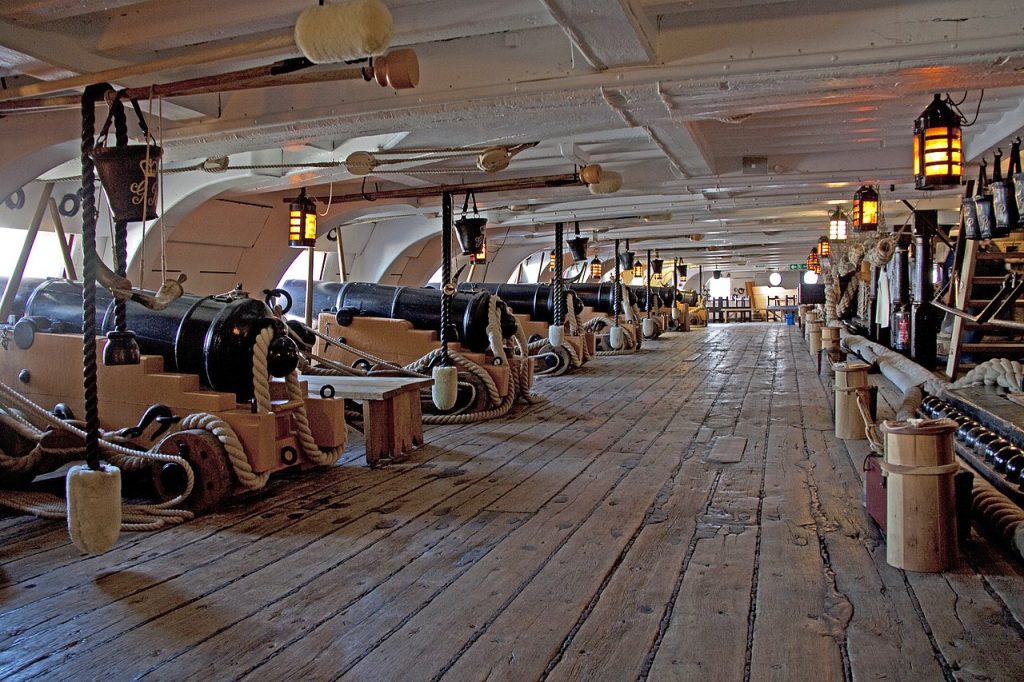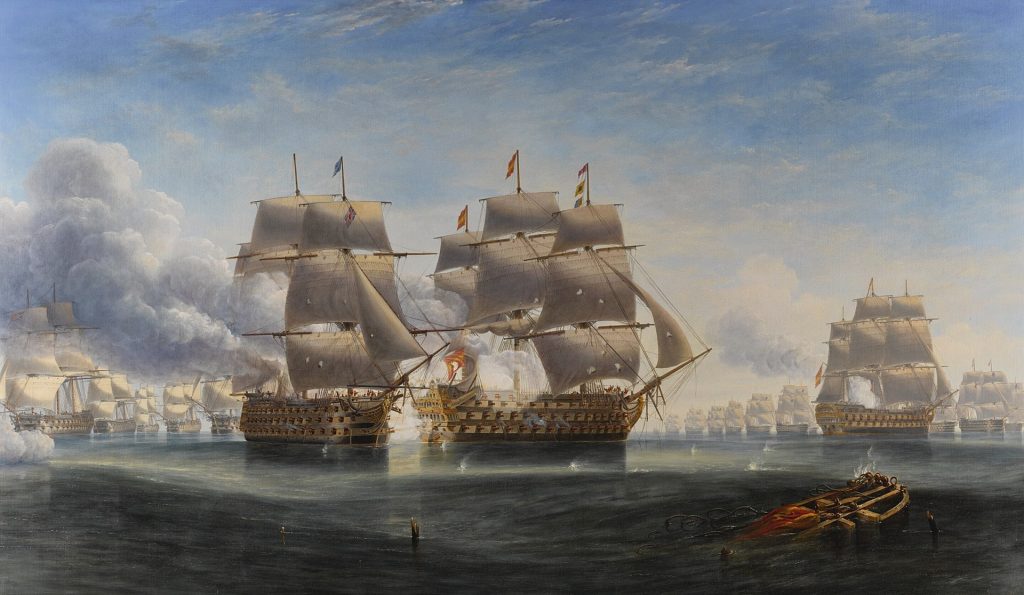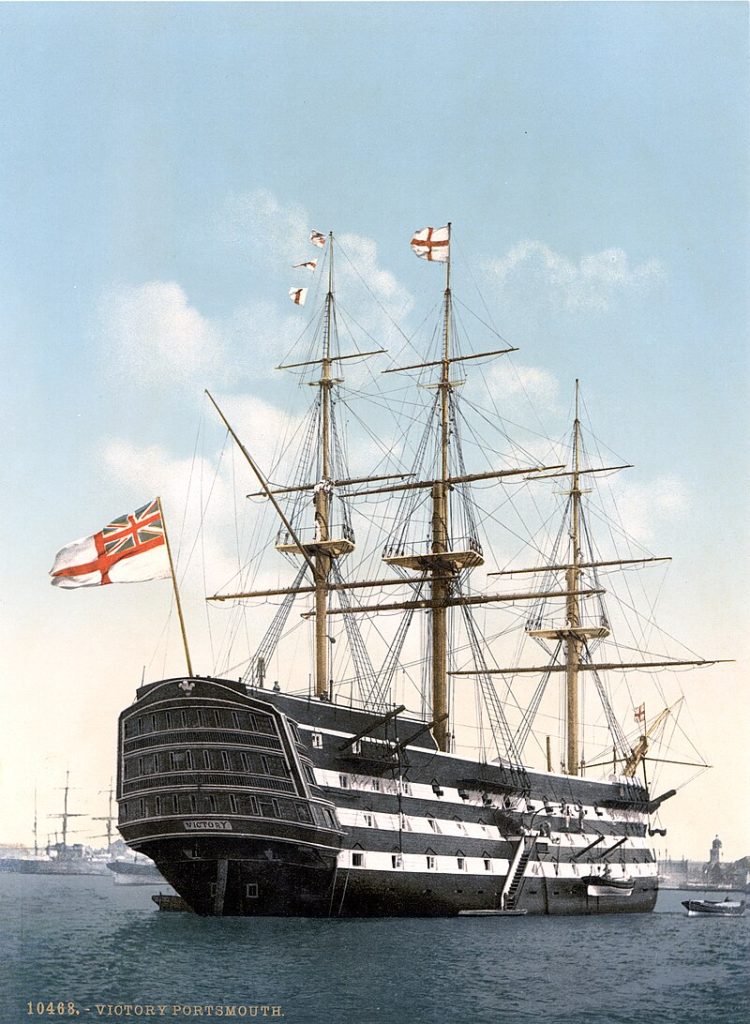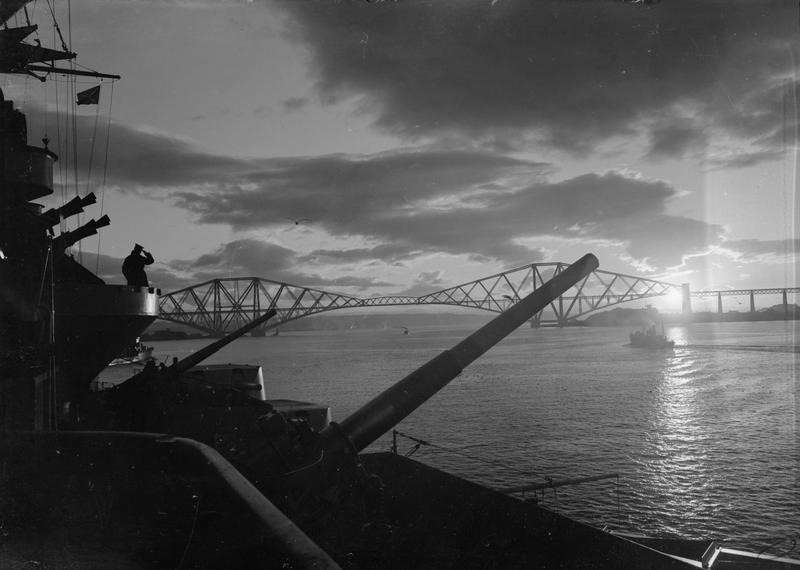HMS Victory is one of the most famous ships in the history of the Royal Navy, best known as the flagship of Vice-Admiral Horatio Nelson at the Battle of Trafalgar in 1805.

Launched on 7 May 1765 at Chatham Dockyard, she was a first-rate ship of the line, carrying 104 guns on three gun decks, making her one of the most heavily armed vessels of her time.
Naval Icon
With a length of 227 feet (69 metres) on the gundeck and a beam of 51 feet (15.5 metres), Victory was designed to combine firepower, durability, and seaworthiness, suitable for line-of-battle tactics.
Throughout her career, HMS Victory served in multiple conflicts, including the American Revolutionary War, the French Revolutionary Wars, and the Napoleonic Wars.

By the time of the Battle of Trafalgar, she had undergone numerous refits to improve her sailing performance and armament. Her firepower included 32-pounder guns on the lower gun deck, 24-pounders on the middle deck, and 12-pounders on the upper deck, supported by smaller guns on the quarterdeck and forecastle.
She could accommodate around 850 crew members, including officers, sailors, and marines, all essential for manning her guns and maintaining operations during battle.
Trafalgar
The Battle of Trafalgar on 21 October 1805 cemented HMS Victory’s place in naval history. As Nelson’s flagship, she was at the centre of the action against the combined French and Spanish fleets off Cape Trafalgar, Spain.

Nelson was mortally wounded aboard Victory, but the ship survived intense combat, contributing significantly to the decisive British victory that ensured Royal Navy dominance for the remainder of the Napoleonic Wars.
Portsmouth
After Trafalgar, HMS Victory continued in active service before being relegated to harbour duty in 1824. By the mid-20th century, she was recognised not only as a historic vessel but also as a symbol of Britain’s naval heritage.
Restoration and preservation efforts, beginning in earnest in the 1920s and continuing to the present day, have maintained her as a museum ship at Portsmouth Historic Dockyard.
Visitors can explore her decks, gun rooms, and Captain’s quarters, providing a tangible connection to 18th- and 19th-century naval life.
Legacy
Today, HMS Victory remains the oldest commissioned warship in the world, still officially in service as the flagship of the First Sea Lord, a ceremonial role reflecting her continuing symbolic importance.

Her preservation offers historians and the public alike a direct insight into naval warfare, shipbuilding, and maritime life during one of Britain’s most significant eras.
HMS Victory’s combination of historical significance, surviving architecture, and connection to Nelson ensures she remains a key symbol of the Royal Navy, a tangible reminder of Britain’s maritime past and the evolution of naval warfare.








